
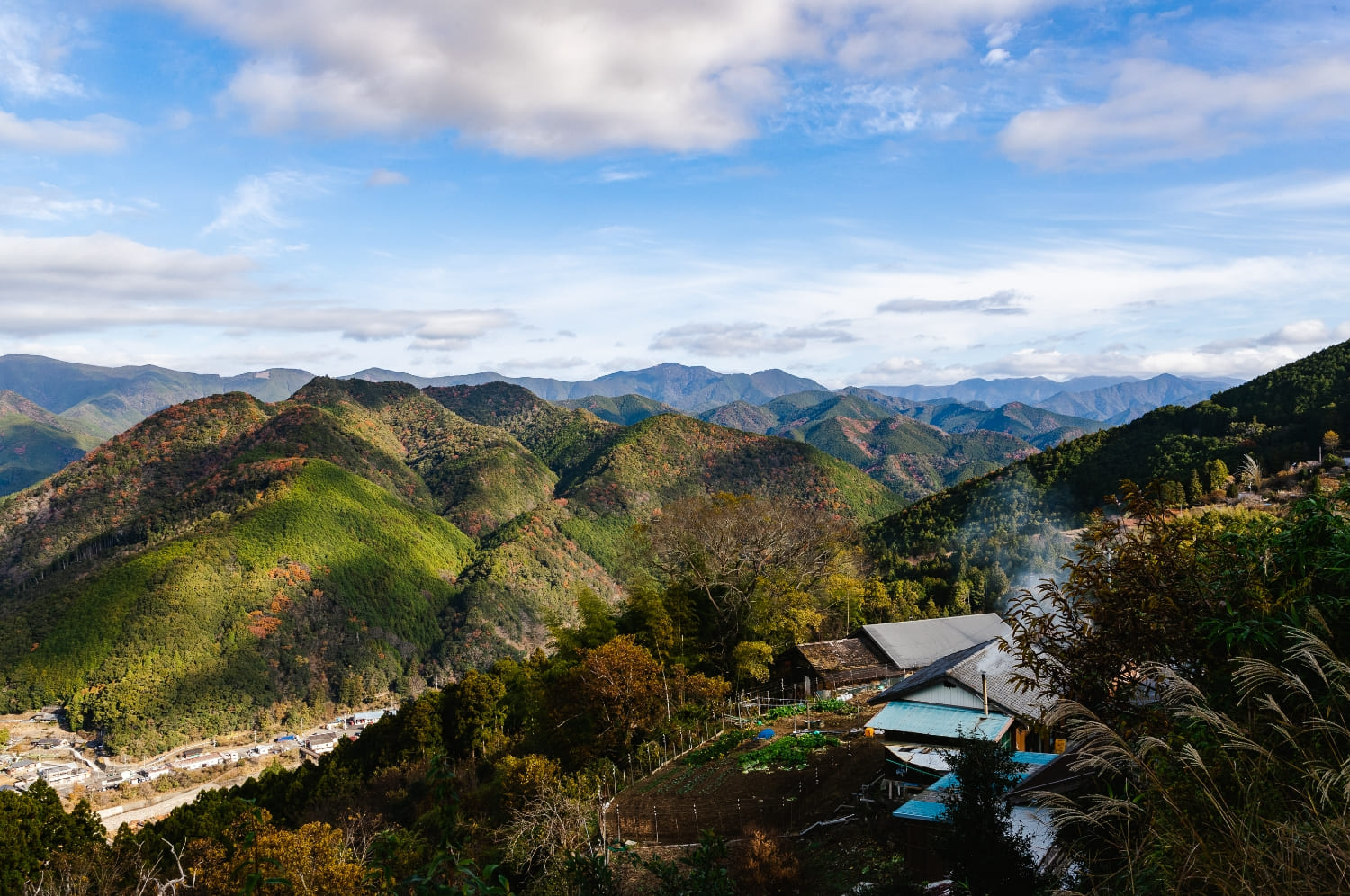
Kishu Waka Beef, a Wakayama-raised black cattle breed
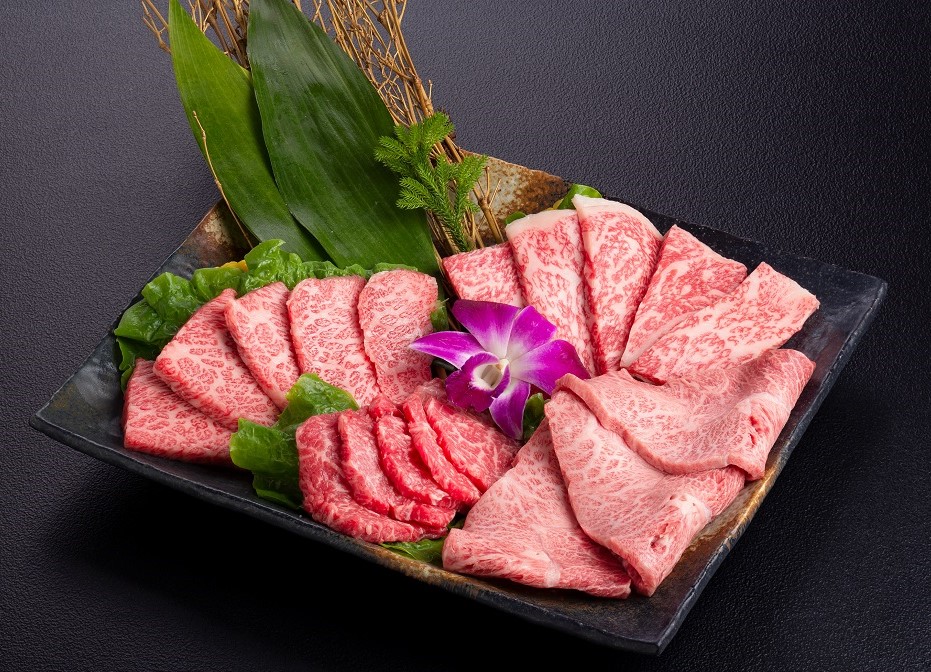
A cowshed at the top of a certain mountain in the town of Yuasa, Wakayama Prefecture. You wouldn’t expect it to be in a place like this, would you? Kishu Waka Beef, Japan’s highest quality Wagyu beef, is raised in this mountainous area. It was awarded a special prize for 2020 in the Premier Wakayama Awards, which are given to outstanding prefectural products.
When you hear the word ‘Kuroge Wagyu’, you probably think ‘Ah, marbled meat’ and imagine the melt-in-your-mouth fatty meat you get at yakiniku restaurants, but Kishu Waka Beef, despite being Kuroge Wagyu, is a healthy lean meat with less fat, which is very popular these days.
The company that raises Kishu Waka Beef, Eco Management Co, is a company whose main business is waste management. In fact, there is a deep relationship between waste disposal and cattle rearing. We asked Mr Sohei Sakaguchi, president of the company and director of the Kishu Waka Beef Council, about the secret behind the delicious lean meat with little fat in Kishu Waka Beef.
Black Japanese beef fattened in Wakayama Prefecture.
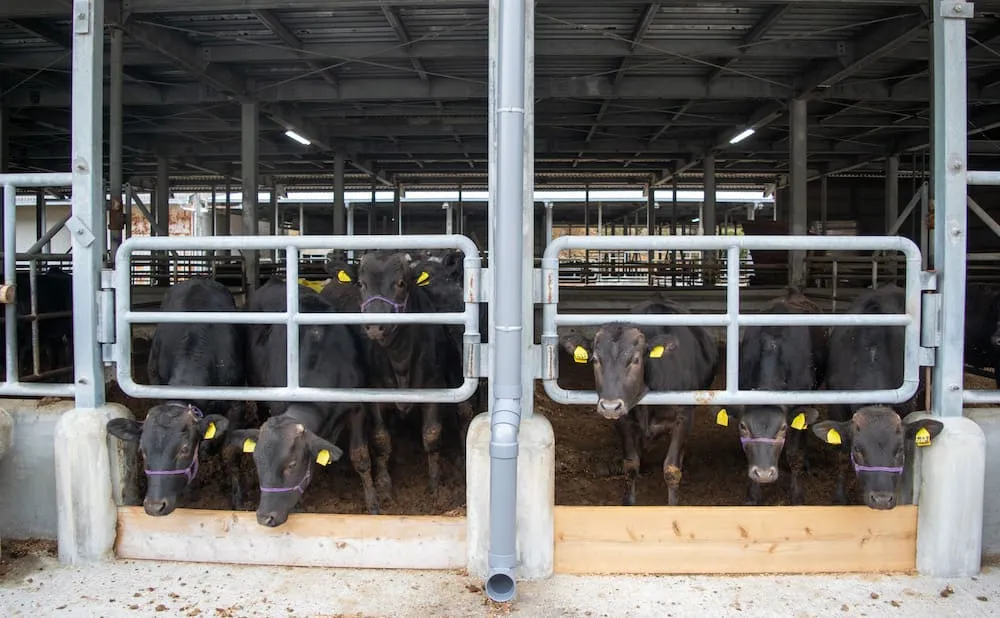
Kishu Waka Beef is defined as follows.
Kishu Waka beef is defined as beef that satisfies all of the following (1) to (3).
(i) The carcass must be produced from 24-month-old or older Japanese Black bulls and heifers owned by a member of the Council and fattened using the rearing method specified by the Council, with the longest rearing period being in Wakayama Prefecture.
(ii) The carcasses mentioned in (i) above must be produced from cattle fed with feed containing feed ingredients produced in Wakayama Prefecture.
(iii) The carcass in (i) above must have a carcass grading of A2, A3, A4 or B2, B3, B4 by the Japan Meat Grading Association.
(Quoted from the official Kishu Waka Beef website).
Currently, Kishu Waka Beef is raised only in Yuasa Town and Gobo City, with a total of about 300 head.
The farm in Yuasa also breeds cattle, and there were many calves born here. They are truly Wakayama-born and Wakayama-raised Wagyu cattle.
However, they were not bred on a large scale from the start. Cows are basically born once a year, so the number of calves has been increased little by little. Furthermore, they are raised carefully over a long period of time, as it takes more than 24 months before they are ready for shipment.
According to Mr Sakaguchi, the target is to have a system in place to be able to ship 100 cows a year. Conversely, it can be said that Kishu Waka Beef is a very precious meat, as only 100 head are shipped per year.
県副産物を1割以上利用した飼料で肥育
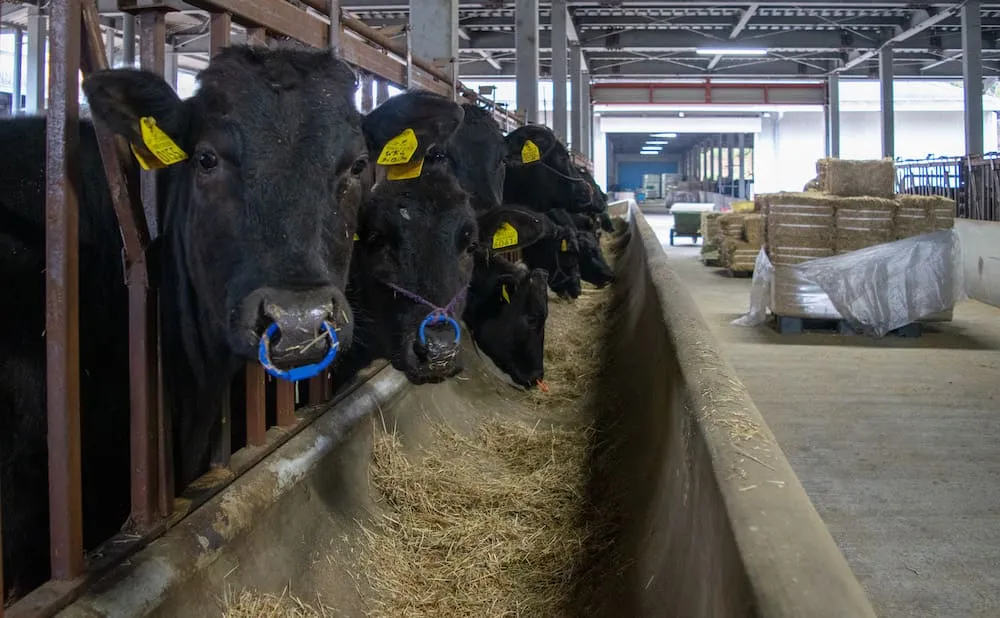
Another characteristic typical of Wakayama is the use of feed containing ‘feed ingredients produced in Wakayama Prefecture’. More than 70% of the cattle are fed a feed called ‘eco-feed’, which is made by fermenting and drying by-products from Wakayama Prefecture’s specialities such as mandarin orange juice and Yuasa soy sauce.
Normally, the marbled meat of black Wagyu beef is considered to have a lot of fatty intermixture (tannin), but Kishu Waka beef aims to produce lean meat with little tannin. Eco-feed is rich in vitamins and protein, which is the key to reducing tannin.
By feeding Eco-Feed.
The average intramuscular fat content in the loin core is reduced by approximately 10% compared to standard marbled Wagyu beef.
Vitamin E content increases by an average of 1.7 times.
(See Kishu Waka Beef brochure).
It is easy to eat as it is not fatty, and some people say they can eat as much as they want. Vitamin E is also expected to have antioxidant, anti-ageing and cancer-preventing effects and is popular among women and the elderly.
Breeding without vitamin restriction
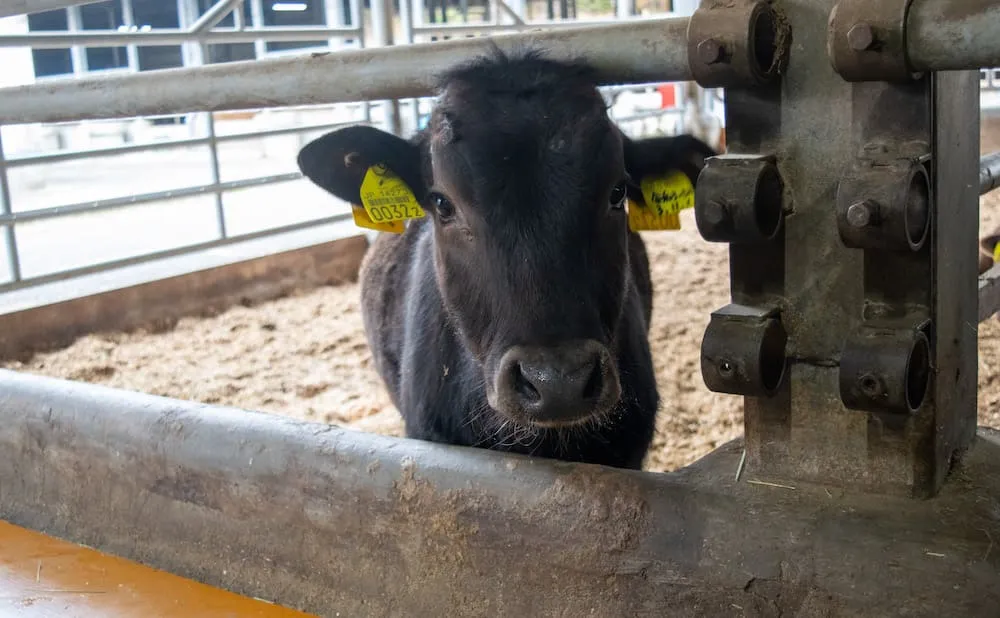
Normally, in order to raise marbled cattle, vitamin feeding is restricted and fat is allowed to accumulate in the body. However, Kishu Waka Beef is not restricted to such vitamins, but rather is fed with a steady stream of vitamin- and polyphenol-rich ecofeed to raise healthy cattle.
In recent years, the concept of ‘animal welfare’, in which the animal’s dignity is respected and it is reared in an environment with as little stress as possible, has become increasingly common in Japan. Kishu Waka Beef, raised without vitamin restrictions and with the necessary nutrition, is truly in line with the concept of animal welfare.
Ecofeed originates from large quantities of food waste
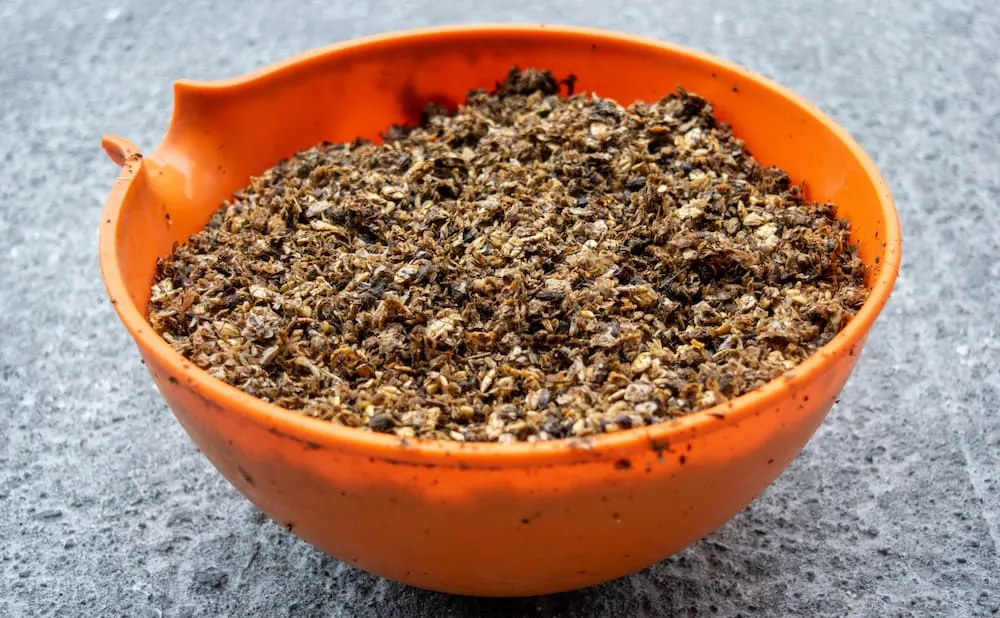
Ecofeed is the most important part of raising Kishu Waka beef. The birth of Ecofeed was the result of an episode unique to Ecomanagement, whose core business is waste treatment.
Until then, the food factory of a major supermarket with which we do business had been discarding the tonnes of okara it produced each day, but the final disposal plant refused to process it, leaving us at a loss.
In an attempt to somehow break out of the situation, a method called ‘silage’ was introduced, in which the raw materials are sealed and fermented with lactic acid bacteria to improve their shelf life. They heard that this could be used to feed livestock.
They began to use the same method to ferment not only okara but also mandarin oranges, soy sauce and tea pomace, and began to make animal feed in earnest. However, when they told the company they were doing business with that they wanted to collect food residues for making feed from now on, at first the squeezed lees they collected contained rubbish with them, and they had to visually remove all of them and bow down many times to avoid putting rubbish in them.
In addition, EcoManagement’s eco-feed is dried in the sun. It is a truly eco-friendly feed as it does not use fire and is therefore environmentally friendly.
The original definition of Ecofeed is as follows.
‘Eco-feed’ (ecofeed) means “ecological” or “economical”. The term ‘ecofeed’ was coined from the words ‘eco’, meaning ‘ecological’ and ‘economical’, and ‘feed’, meaning ‘feed’.
(Cited from the Japan Scientific Feed Association).
However, this does not mean that waste food should be fed indiscriminately. Only those that meet certain standards, such as the utilisation rate of circulating food resources and the nutritional composition, are certified as Eco-Feed.
At the request of the prefecture for cooperation, Eco Management set up an Eco-Feed demonstration farm and repeated demonstrations on the correlation between the feed produced and cattle data. According to Mr Sakaguchi, ‘It took us 10 years to be able to produce a proper, good product’.
‘The environment is changing the world’, Mr Sakaguchi’s thoughts.

Mr Sakaguchi shares his thoughts on the environment and a recycling-oriented society, saying, ‘Ever since I was young, I have been aiming for the word “recycling-oriented”. The residues and waste that inevitably arise in the food processing process are not wasted but utilised in new ways, and the cattle raised in this way are consumed by us humans. It is a way of thinking that does not waste resources, but circulates them within society.
‘In the past, the image of the waste man was not so good. But I thought that the environment is going to change the world in the future, so we have to be a more proper company. We thought that if we created a recycling-oriented company, we would be recognised by the world, so we worked very hard to make it happen.’
When the author commented that the times have finally caught up with us in this age of SDGs, the company laughed happily and said, ‘Yes, that’s right! He laughed happily.
Message to readers.
‘I didn’t have many opportunities to make people happy or impressed in the waste business, but since I started working with Kishu Waka Beef, I’m happy to hear more and more people say, “You’re doing interesting things” or “This meat is delicious”. This is meat with a lot of thought put into it, so please give it a try. Even though it’s lean, it’s juicy without being dry, and it’s delicious as yakiniku, steak or shabu-shabu.
The black Wagyu beef is carefully raised with feed that can only be produced by Eco-Management, whose main business is waste disposal. Please come and taste this unique Wakayama delicacy.
Interview and text by Shiori Koyama









